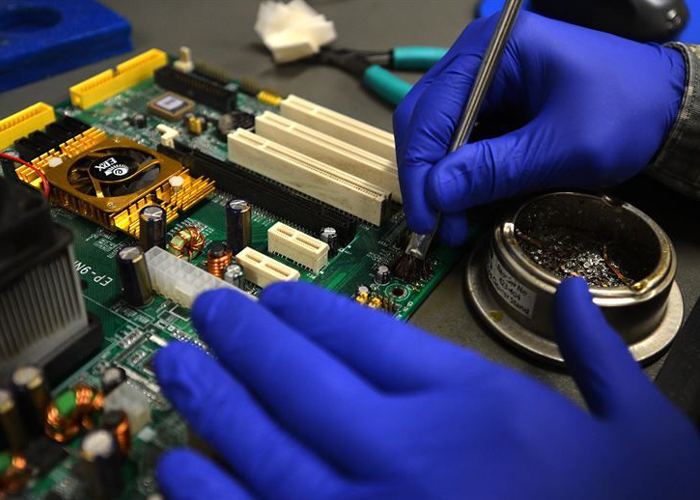Diploma in Hardware Maintenance
- Home
- /
- Courses
Diploma in Hardware Maintenance

Course Details
Computer Hardware Fundamentals
- Understanding basic components of a computer system (CPU, motherboard, RAM, storage devices, etc.).
- Learning about peripherals such as printers, scanners, and external storage devices.
Operating Systems
- Installation, configuration, and troubleshooting of popular operating systems (Windows, Linux, macOS).
- Understanding file systems, user management, and system security.
Hardware Troubleshooting and Repair
- Techniques for diagnosing hardware issues using diagnostic tools and software.
- Hands-on experience in repairing or replacing faulty hardware components (CPU, RAM, hard drives, power supplies, etc.).
Computer Networking Basics
- Introduction to networking concepts such as LAN, WAN, IP addressing, and subnetting.
- Configuring and troubleshooting network connectivity issues.
Peripheral Device Maintenance
- Maintenance and troubleshooting of peripherals like printers, scanners, and external storage devices.
- Understanding drivers, installation procedures, and compatibility issues.
System Assembly and Disassembly
- Techniques for assembling and disassembling computer systems.
- Proper handling of components and tools to prevent damage during maintenance.
Safety and ESD (Electrostatic Discharge) Precautions
- Understanding safety protocols and precautions while working with computer hardware.
- Proper handling of ESD-sensitive components to prevent damage.
Project Work and Practical Training
- Practical projects and lab sessions to apply learned skills in real-world scenarios.
- Hands-on training in diagnosing, repairing, and maintaining computer systems and peripherals.
Career Opportunities
Computer Hardware Technician
- Perform installation, maintenance, and repair of computer hardware components and peripherals.
- Diagnose hardware issues and provide technical support to end-users or clients.
IT Support Specialist
- Provide technical assistance and troubleshooting support to users or employees within an organization.
- Resolve hardware and software issues, configure systems, and ensure smooth operation of IT infrastructure.
Field Service Technician
- Travel to client sites to install, maintain, or repair computer hardware and peripheral devices.
- Provide on-site technical support and assistance to resolve hardware-related issues.
Desktop Support Engineer
- Manage and support desktop computers, ensuring they are functioning properly and meeting user needs.
- Install software, troubleshoot hardware problems, and perform upgrades as necessary.
Network Technician
- Assist in configuring and maintaining computer networks, including routers, switches, and networked devices.
- Troubleshoot network connectivity issues and ensure proper functioning of network infrastructure.
Hardware Sales and Support
- Work in sales roles for computer hardware or peripherals, providing technical advice and support to customers.
- Assist customers in selecting appropriate hardware solutions based on their requirements.
Freelance Technician/Consultant
- Offer freelance services in hardware maintenance, repair, and IT support to individual clients or businesses.
- Provide on-demand technical assistance and consultancy for hardware-related projects.
System Administrator Assistant
- Assist system administrators in managing and maintaining computer systems, servers, and network infrastructure.
- Help in implementing security measures, backups, and system upgrades.